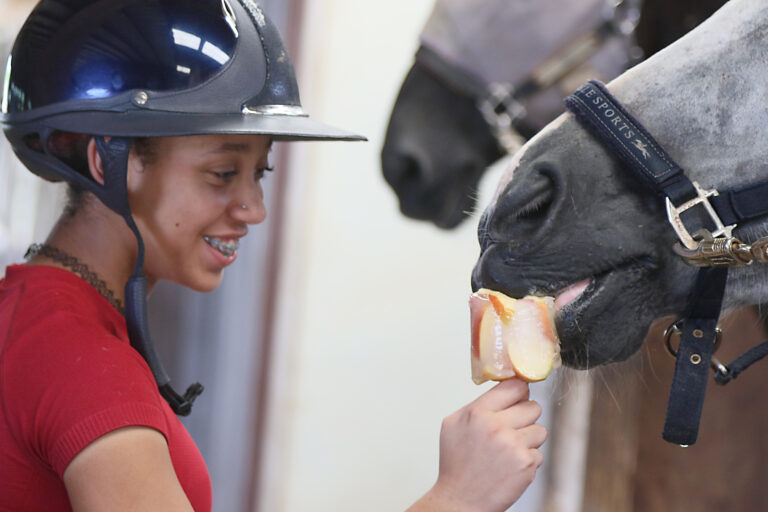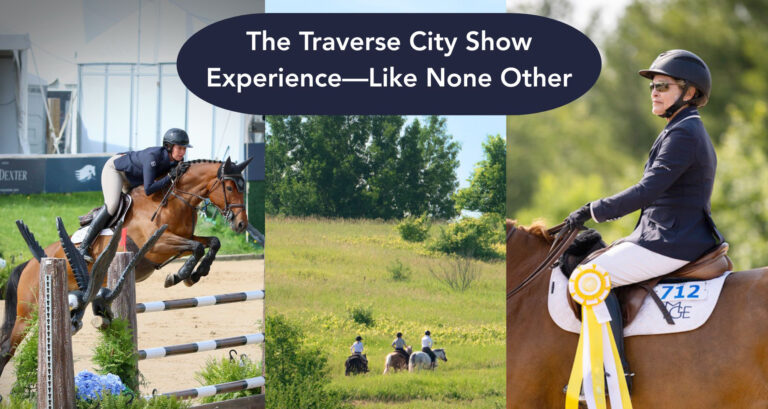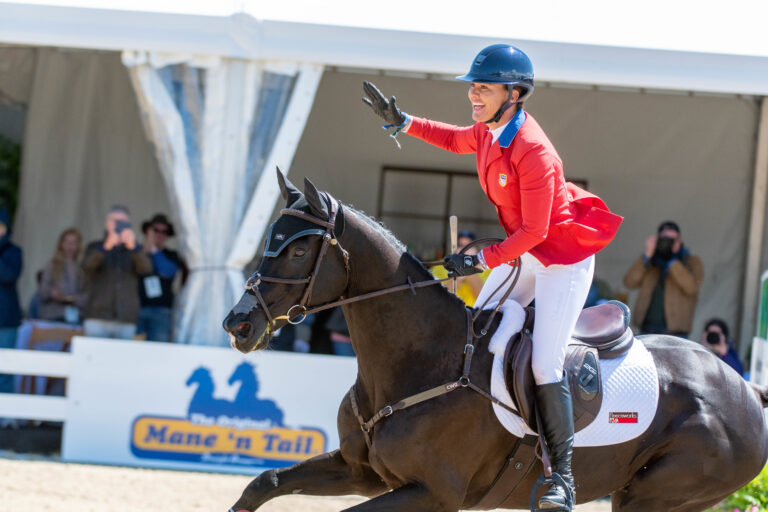 When the victorious Union Army paraded down Pennsylvania Avenue May 23–24, 1865, it took two days for the troops to pass by the U.S. Capitol (visible in the background here). Among the mounted units, which comprised more than 12,000 horses and stretched for 7 miles, was Gen. George A. Custer riding his favorite mount, Don Juan, a Thoroughbred. Possibly, the Jack Russell terrier at right in the photo was at fault when Don Juan bolted through the entire parade, scattering horses and troopers. Gen. Custer passed the reviewing stand so fast he did not have time to salute, but President Andrew Johnson and Gen. Ulysses S. Grant were amused and overlooked the lack of military courtesy. Within a week, these 12,000 horses were shipped by rail to their new stables. | Courtesy, Mathew Brady/Library of Congress
When the victorious Union Army paraded down Pennsylvania Avenue May 23–24, 1865, it took two days for the troops to pass by the U.S. Capitol (visible in the background here). Among the mounted units, which comprised more than 12,000 horses and stretched for 7 miles, was Gen. George A. Custer riding his favorite mount, Don Juan, a Thoroughbred. Possibly, the Jack Russell terrier at right in the photo was at fault when Don Juan bolted through the entire parade, scattering horses and troopers. Gen. Custer passed the reviewing stand so fast he did not have time to salute, but President Andrew Johnson and Gen. Ulysses S. Grant were amused and overlooked the lack of military courtesy. Within a week, these 12,000 horses were shipped by rail to their new stables. | Courtesy, Mathew Brady/Library of CongressWe spend a lot of time thinking about horses, but have you ever wondered if horses think about us?
As they stand in their stalls, quietly munching on hay that cost as much as tickets to Adele’s latest concert, are they thinking about what these strange humans are going to ask them to do tomorrow? On the one hand, horses have a pretty good life. In civilized countries, they get fed and watered regularly, have shelter and generally have their needs taken care of in style. Take a look at the wash stall of any stable and you will find the biggest collection of shampoos and conditioners imaginable. All this for a creature who thinks his own droppings make a good pillow—especially if he is gray.
While you are at it, look into the feed room and you will find more than oats and corn. Modern sporthorses get a cornucopia of additives and supplements. (I was going to say, “… and then top off your visit by looking into the medicine cabinet.” But on second thought, don’t look. It will depress you to think of the vast array of pharmaceuticals that many riders and trainers use on a regular basis.)
My point with all this is that horses have made a trade: They take care of us, and we take care of them. I imagine a competition horse lying down in hock-deep straw thinking, “Let me see, I have a massage this afternoon and my regular pedicure tomorrow morning after my workout with my personal trainer and then … .”
The Great Tradeoff
Anyway, you get the picture. Horses in nature live a very different life. If the weather is cold or wet and they lack sufficient shelter, they cannot rely on the concentrated calories that cereal grains supply; to stay alive they have to hustle. They must graze endlessly to supply the calories they need. In some environments, they have natural predators and their “fight-or-flight” instincts are always close to the surface. By partnering with humans, they avoid the dangers of life in a natural environment.
But you have to be amazed at what horses will tolerate to maintain their partnership with us. Since that partnership began millennia ago, horses have plowed our fields, served as beasts of burden, provided mobility, furnished a staple in the diet of nomadic cultures and carried men and women into war. In 1429, Joan of Arc rode at the head of a victorious army at the Battle of Orleans. This was no small feat, especially considering that she was 17 at the time. (Imagine how a brag point like THAT would have looked on your college essay.) In August 1588, when Elizabeth I addressed her army before the Spanish Armada’s intended invasion of England, saying, “… therefore I am come amongst you at this time … to live or die amongst you all …” she was on horseback.
As mankind realized how valuable horses were as adjuncts to battle, they started to transport horses from one place to another. To accomplish this, humans found ways to overcome horses’ powerful prey-species’ instincts: natural suspicion (amounting to claustrophobia) of confinement or small enclosures. If you study the famous Bayeux Tapestry carefully, you will see depictions of horses crossing the English Channel in some very small, very unsuitable boats as William the Conqueror’s men undertook the Norman Conquest of England in 1066. You can just imagine the foul language it took to convince horses to step off a perfectly acceptable beach into a large rowboat. Those horses carried William and his men into the Battle of Hastings and into history. The Conquistadors of Spain returned horses to the New World beginning in the early 1500s as an aid in their quest for gold and subjugation of indigenous peoples. Horses were suspended in slings to help them tolerate the motion of the waves during the long voyage across the Atlantic. The attrition among the horses was terrible; one part of the Atlantic is called the Horse Latitudes because it marked a point in the voyage where unfortunate horses who did not survive were heaved overboard. To add insult to injury, when they reached the New World, horses were lowered over the side of the ship and had to swim to shore.
 The U.S. Olympic Equestrian Team shipped horses by air for the first time to the 1956 Olympics in Stockholm. (The 1956 Olympics were actually in Melbourne, Australia, but due to the extended quarantine regulations, the equestrian part was held in Sweden at the site of the original equestrian Olympics in 1912.) Frank Chapot—a future Hall of Fame member, Olympic medalist and chef d’équipe of a gold- medal team—is shown here leading Belair up an open ramp into the cargo plane. Horses walked forward into the cabin to their assigned stalls where they were enclosed with plywood sides. Frank said that there were no trucks to transport them to their stabling when they landed in Stockholm. They unloaded the horses and equipment on the tarmac, unpacked the trunks, saddled the horses and rode several miles to the Olympic stabling. I doubt riders would try such a stunt these days. | © Photo by Budd
The U.S. Olympic Equestrian Team shipped horses by air for the first time to the 1956 Olympics in Stockholm. (The 1956 Olympics were actually in Melbourne, Australia, but due to the extended quarantine regulations, the equestrian part was held in Sweden at the site of the original equestrian Olympics in 1912.) Frank Chapot—a future Hall of Fame member, Olympic medalist and chef d’équipe of a gold- medal team—is shown here leading Belair up an open ramp into the cargo plane. Horses walked forward into the cabin to their assigned stalls where they were enclosed with plywood sides. Frank said that there were no trucks to transport them to their stabling when they landed in Stockholm. They unloaded the horses and equipment on the tarmac, unpacked the trunks, saddled the horses and rode several miles to the Olympic stabling. I doubt riders would try such a stunt these days. | © Photo by BuddHorses Travel by Rail
Despite their inborn aversion to close confines—especially if they were noisy, dark and smelly—by the mid-1800s horses were being routinely transported by rail. From my office window, I can see the road used by Gen. Thomas “Stonewall” Jackson (Confederate States of America) when he marched his men south down the Paris, Virginia, valley to modern-day Delaplane, where they boarded trains bound for the First Battle of Manassas. (Although horses had been transported to war in Europe from the middle 1850s, this was the first instance of moving horses by rail in the U.S.) Chances are that Little Sorrel, Jackson’s favorite charger, made the trip with him.
Four years later, a Grand Parade was held in Washington, D.C. to celebrate the end of the Civil War. U.S. Army records show that more than 12,000 horses were shipped from Washington after the parade. Mankind was obviously solving the problem of moving large groups of horses from place to place.
Horses Travel by Sea
Domestic transport by rail was a fait accompli by the late 19th century, but when international teams wanted to ship their horses abroad for an Olympic competition between 1912 and 1956, they had to ship them by sea. Fortunately, both ships and horse care had improved dramatically over the centuries. To keep their animals fit, teams built walking tracks around the main deck of the ship and also used treadmills. (Machines for maintaining health and fitness such as treadmills and automatic walkers have continued to improve in the past century. The Army’s automatic walkers probably consisted of some poor private being ordered to hand-walk his charge around the exercise track for an hour twice a day, changing directions every 15 minutes.)
 The conditions for horse transport by air have improved a great deal since the early 1950s. Modern air containers for horses are much safer and more comfortable, and the stress of transport has been greatly reduced. One of the best Grand Prix dressage horses we have ever seen, Valegro, is shown walking out of his container as he arrives for the 2015 World Cup Final at Las Vegas. With a face as cute as that, it is no wonder that he comes as close to getting “level 10s” (getting the highest possible score for every movement in the test) as any horse in history. | Courtesy, Karin Ahlqvist, The Dutta Corp.
The conditions for horse transport by air have improved a great deal since the early 1950s. Modern air containers for horses are much safer and more comfortable, and the stress of transport has been greatly reduced. One of the best Grand Prix dressage horses we have ever seen, Valegro, is shown walking out of his container as he arrives for the 2015 World Cup Final at Las Vegas. With a face as cute as that, it is no wonder that he comes as close to getting “level 10s” (getting the highest possible score for every movement in the test) as any horse in history. | Courtesy, Karin Ahlqvist, The Dutta Corp.… and Air
The U.S. Equestrian Team flew its horses to Europe for the first time in 1956 for the Stockholm Olympics. Transport by air was obviously a huge benefit to horses because it lessened time in transit; however, air travel’s early days entailed some serious drawbacks. The first airplanes used for horse transport were slow, noisy, dark and claustrophobic. The containers used at the time did not really “contain” the horse; they were plywood-sided boxes open at the top. Horses were led up a ramp into the airplane forward to their position where the plywood box was closed in around them. The ceiling of the plane was so close overhead that horses could hit their heads on it, which might provoke a panic response from a horse already discomfited by his unnatural surroundings. The biggest change in equine air transport has been in the safety and comfort of the shipping containers, especially when horses travel as air cargo. There have also been major improvements both in aircraft and in the system for loading the horses—already in their containers—into the airplane.
But in 1964 our Olympic event team was en route at 25,000 feet between JFK and O’Hare airports when Mike Plumb’s horse, Markham, panicked and attempted to leap out of his crate. Attempts to tranquilize and restrain him failed, and he was humanely destroyed in flight. The decision to put Markham down was not taken a moment too soon as by that time he was partially out of his container and had cracked one of the interior windows, nearly causing a catastrophic depressurization. After a brief emergency landing at O’Hare, the rest of the team was able to successfully complete their trip to Tokyo.
My first experience with transporting a horse by air was only four years after this tragedy, and it was very much on my mind as Kilkenny (“Henry” is in the U.S. Eventing Association Hall of Fame now and deserves to be) was led onto the plane at JFK. However, Henry took the attitude that anything humans wanted him to do was going to be all right. I must admit that my heart was in my mouth when I realized he was so tall that he would fly across the Atlantic with his ears touching the ceiling.
Fortunately, he was transported safely and, in turn, transported me on a series of marvelous adventures. Watching the cargo door close on him was the first time, but not the last, that I thought of how trusting and kind horses are and how they also can transport us. On our journeys together, they truly provide transports of delight.
Correction: In the March 2016 issue, there was an error on page 18 about the change in show-jumping penalty points. The correct sentence is: In the mid-1970s, the penalty points for a show-jumping knockdown were lowered from 10 to five and the ratio of influence of the tests was changed to 3:12:2, thus slightly increasing the influence of the show-jumping test.
This article originally appeared in the April 2016 issue of Practical Horseman.











